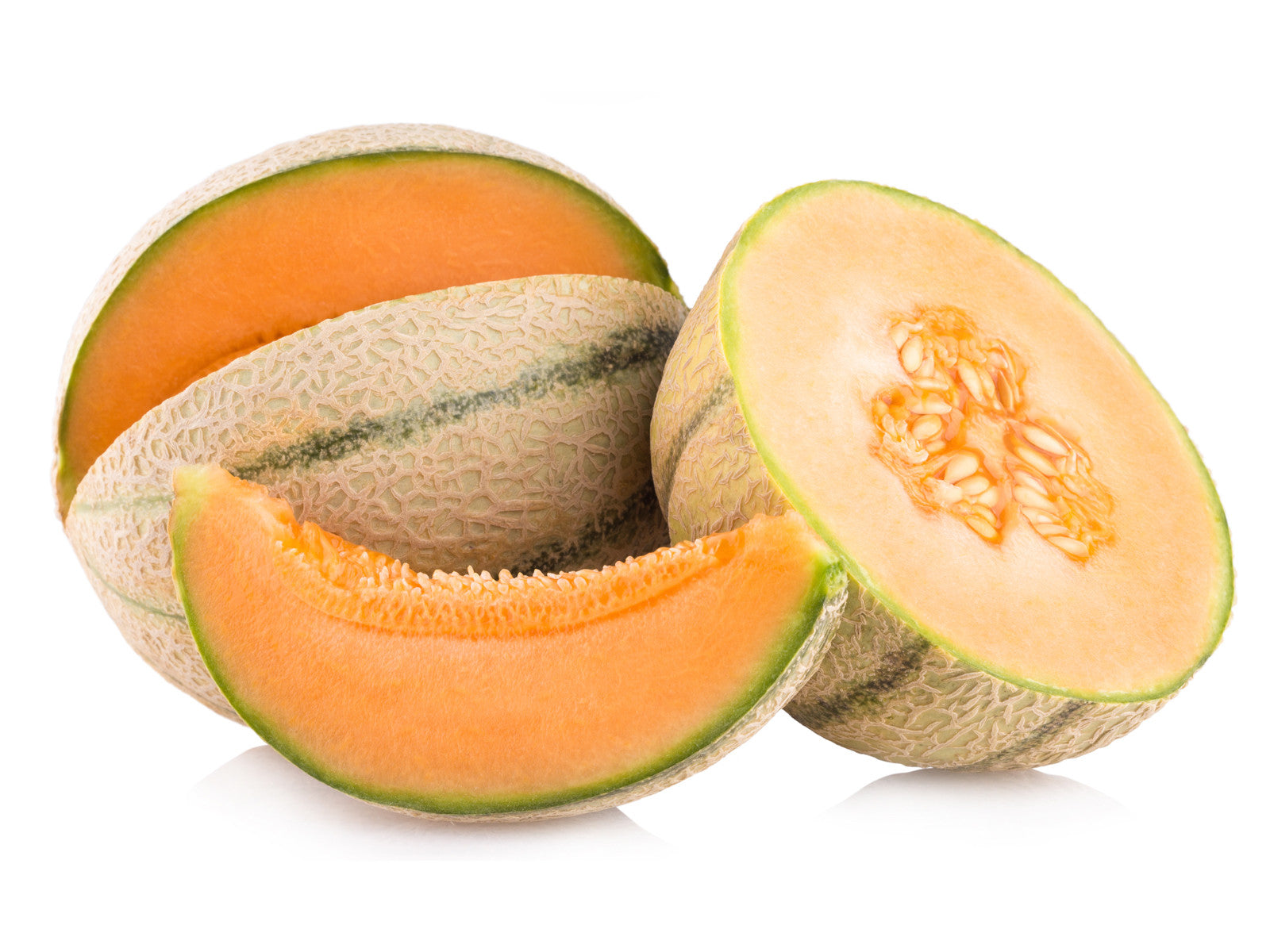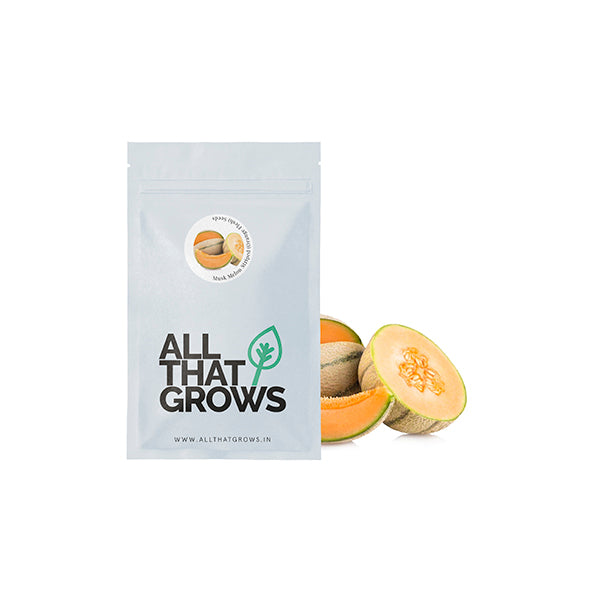



Musk Melon Striped (Orange Flesh) Seeds
Seed Type : Non-Hybrid, Open Pollinated and Non-GMO
Sowing time : February to March
Fruit Picking : After 90-95 days from sowing
Fruit Shape : Round with stripes
Fruit Color :Light brown with green stripes
Average Weight :800 to 900 gms
Flesh Color :Orange
Sweetness :Very sweet and juicy
Specification :Good keeping quality
- SOWING
TIMEFebruary to March
- Sowing
DistancePLANT TO PLANT 5 FT LINE TO LINE 2 FT
- Fruit
Weight800 to 900 gms
- Fruit
ShapeRound with stripes
- Days to
maturity90 - 95 days
- Details
- How to sow
- Reviews
Golden melon or honey-melon is a fruit for everyone. The balance in its taste, color, crunchiness and water content is a perfect combination for anyone hoping to consume a delight. The golden melon was originally from Europe and Africa before spreading to other parts of the world. Golden melon is a great constituent of essential minerals and nutrients such as vitamin C, pantothenic acid, calcium, zinc, vitamin B6, fiber, magnesium, iron, potassium, vitamin A and omega-3 & 6. The intake of golden melon helps to regulate blood pressure level due to the presence of potassium in it. The Omega 3 & 6 fatty acids present in golden melon also makes it effective for maintaining a healthy heart. Puree and use your melons to make sauces, smoothies, and cocktails. The sweet flavor is complemented by cucumber, mint, basil, red onion, blueberries, mango, robust varieties of cheese, salted meats, honey, cream, black pepper and balsamic vinegar.
Do not forget to scoop out the seed portion inside the fruit just like you would do for papaya. Golden melon is easily perishable and as such necessitates quick consumption upon ripening to avoid spoilage.
Planting instructions
Amend soil with aged manure or compost before planting.
Growing vines on raised rows, known as hills, ensures good drainage and the heat from sun remains locked in for a longer time.
Muskmelon vines are really tender and should not be transplanted until frost has completely vanished.
Plant seeds one inch deep, 18 inches apart, in mounds about 3 feet apart.
If you have limited space, vines can be backed by a trellis.
Growing Requirements
watering
Keep the soil around the young muskmelon plants moist. They should get around 1-2 litres of water a week. Reduce watering once the fruit starts growing. Avoid wetting the leaves.
pests
The following pests are known to attack this crop -Aphids, Cucumber Beetles, Squash Vine Borer Moths, Fusarium Wilt. Pest infestation shows symptoms like yellow-brown spots, water-soaked lesions on leaves which exude a milky substance that dries to form a white crust, beside lesions and a sticky, sugary substance called honeydew which encourages the growth of sooty mold on the plants etc.
soil
Likes loamy, well-drained, sandy soil with a pH of around 6.
spot
Plant muskmelons where they can receive plenty of sunlight
temperature
Plant Muskmelons when the soil temperature is at least 15°C [60°F] for germination.
how to harvest
When rinds begin to turn from green to tan or yellow, the melon is probably ripe, but be careful not to pick too early.
Look for a gap in the base where it binds to the fruit. This is a sign of ripeness as well. If melons begin to fall off the vine by themselves then they are usually overripe.
Harvest melons when the vines are dry, and be careful not to damage them.
They will soften after harvesting, but will not continue to sweeten once off the vine.
Muskmelon can be stored uncut for 5 or 6 days. If cut, they can last in the refrigerator for approximately 3 days, wrapped tightly in plastic.

The productiveness of any seed we sell is subject to your local climatic conditions*, the sowing method you adopt, and your commitment to the planting process. We give no warranty, expressed or implied, and are in no way responsible for the produce.
Please note that all our seasonal recommendations/ sowing information is as per the local climatic conditions. *For more information on the optimum conditions required for growing seeds in your region, please contact us at, hello@allthatgrows.in or Whatsapp us at, +91 8544865077
Questions & Answers
Ask a Question-
what is the TSS of the melons that your selling ?
Hi,
Thanks for reaching out to us. TSS of the melons is around 11 bricks.
Please feel free to reach us in case of any query.
Best regards,
Team AllThatGrows


 Sign In
Sign In









